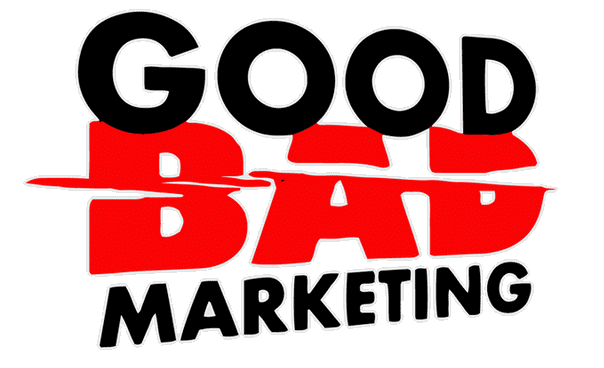You may know Deliveroo – a food delivery app that operated first in England but has now become one of the most popular food delivery platforms in various states. Though it doesn’t cater to all restaurants, they help you reach out to their partner stores, local and franchised, and cater to all your cravings… or even after you work long hours in the office but just could not get your way to call any fast food store. Just as it is, the app works conveniently for everyone with a smartphone.
As Deliveroo is paving its way to the international arena and aims to cater to clients globally, the platform was not actually popular decades ago. From just a marketing plan, to officially starting years later after its drawbacks, Deliveroo has become so known that investors are now considering buying stocks from it.
Yet, how did everything happen? What’s to note about Deliveroo?
Deliveroo Founders
2001
Will Shu, the founder of Deliveroo, was a banking analyst in New York for Morgan and Stanley in 2001. As a corporate employee, he worked long shifts, day and night, and was always eating takeout that he would spend $25 out of his daily overtime pay allowance just so he could pull off an all-nighter.
2004
This year, Will Shu has moved from the American office to the English office in London’s Canary Wharf Neighborhood. By then his cravings for food and delivery spending went very high, as he was always buying from the local fast-food chains, Tesco or Chilli’s, but just worked as how he did back in New York. By then, times got really hectic and stressful, but it wasn’t much of a thought for Shu. Yet, what baffled him most is how he spent a lot on food delivery services, and initially thought of something on how he can get a variety of food choices delivered, picking something out of the usual.
2006
Will Shu started working at a hedge fund, a type of limited partnership wherein investors use a high-risk method in hopes of realizing large capital gains. With the experience he has been doing in investments partnered with the food delivery companies he came along with, his hours became more reasonable which got him thinking about how food delivery services like Just Eat are taking off but found them falling short. This was the initial phase of Deliveroo, and Shu has yet to start off as a company that can convince the mass that they deserve better food delivery services.
2007
The founder thought that he could do better, and contacted his old friend Greg Orlowski, an app developer. This year they have pitched Deliveroo to investors, however, the concept was just too confusing —- the early phases of apps were not yet successful in 2007, and it was just about to take off; perhaps Deliveroo was just too early on in this decade.
2010
Will Shu went back to the United States and attended Wharton, where he took an MBA for 2 years. This was a year for him to revise his marketing plans and concepts with Deliveroo, giving up on this future startup was not a choice.
Deliveroo’s Early Years
2013
Without having an office and working only with Orlowski, Shu launched the app where people can now have food delivered through Deliveroo’s app. With high courier spending, Shu began to incorporate Deliveroo “riders” and delivered food to anyone right at their doorstep. Shu’s first customers were also his colleagues and even though the founder has been in his trying times.
2014
With just 3 partner restaurants, Deliveroo raises its $2.75 million funding round from Index and Hoxton Ventures. Later on, the app launches in Brighton, the first city for Deliveroo outside of London.
2015
Deliveroo expanded in strategic international areas like Paris and Berlin, where it became successful later on. In the same year, the company’s worth became $600 million, with a $1 billion valuation.
2017
Deliveroo launches its pop-up kitchens, with the goal to help established restaurants deal with higher delivery requests. Deliveroo’s valuation is now at $2 billion after it raised $385 million from investors including the US fund giants Fidelity and T Rowe Price.
2020
Deliveroo rumours to open its IPO. Topped up with the increase in sales during the height of the pandemic, it gained a 54% increase in its total revenue, being a unicorn for investors. In the same year, they have also included delivery services for shops rather than restaurants only.
Deliveroo Marketing Strategies
Not only because of convenience, but Deliveroo also paved a way for investors to swarm over its IPO because of its popularity —- better customer experience, generous deals, and a whole lot of promotions from known individuals.
Deliveroo Promo Codes
Basically, Deliveroo knows that promo codes are their market’s black hole. People are generally enticed with discount offers, thus drawing clients who aren’t a fan of hefty costs for food deliveries. Consequently, Deliveroo provided customers with $20 discounts once they register, which will eventually lower customer hesitation; and once they experience how convenient the app is, it is more likely that they jump to another food delivery app. Hence, a very good deal for the customers.
Deliveroo Strategic Areas
Deliveroo knows that their usual customers are employed. Like Will Shu in 2001, most employed individuals are ordering take-outs. Thus, they made sure to partner with stores in areas with many offices, eventually capturing the central business districts of every city. Moreover, Deliveroo also initiated a campaign in UK’s Waterloo Station called the RooMachine, where it engaged users to spin the rollers so they can win vouchers from partner restaurants. It made customers want more, to gain more users in the long run.
Deliveroo & Influencers
As social media has become a huge platform for promotions and sponsorships, Deliveroo also partnered with influencers internationally. Writers, bloggers, and vloggers are now creating content at Deliveroo’s convenience and even-handed in promo codes for them to use the app and avail of Deliveroo’s services. Positive reviews from trusted sources were also incorporated by the company, which became a major reason for future clients to try it out.
It’s just amazing how everyone can order food without going to a store. With the innovation bought by smartphones paired with the geniuses behind apps, food delivery services can now be done conveniently using various food delivery platforms. Just as we know it, we don’t need to call the fast food store anymore where we wait minutes just to get our food taken; food delivery apps provide you with a variety of food choices from different stores, all in just one click.





